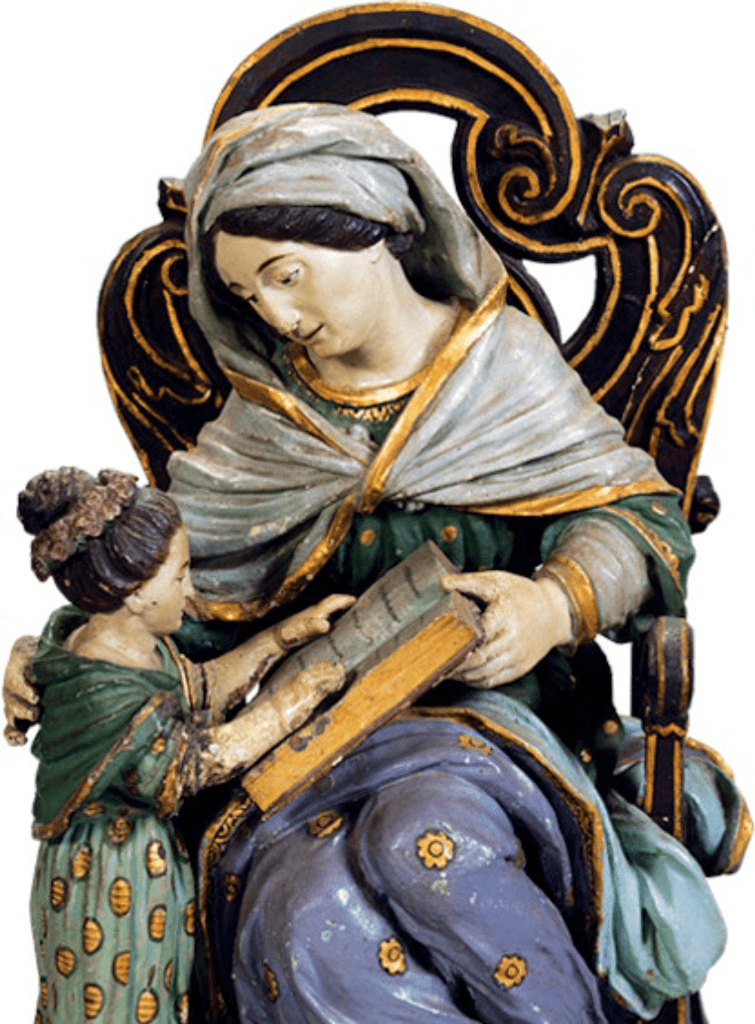



The mother was herself a child once... Here we see the Virgin Mary at her mother, St. Anne’s knee, learning how to read.
This representation of the Virgin Mary’s education was widespread, and led to the book becoming a common symbol associated with The Mother of Our Lady. Many Catholic educational institutions across the world are named for St. Anne.





Mary was engaged to be married to Joseph of Nazareth, of the House of David, a carpenter by profession.
She was a young woman, full of hopes and dreams of her future life. Did this maid of Galilee have an inkling of what was to come? Could she have even imagined her strange and unique destiny? That, in her life, and as a mother, she was to know great joy and great sorrow, and both at once?

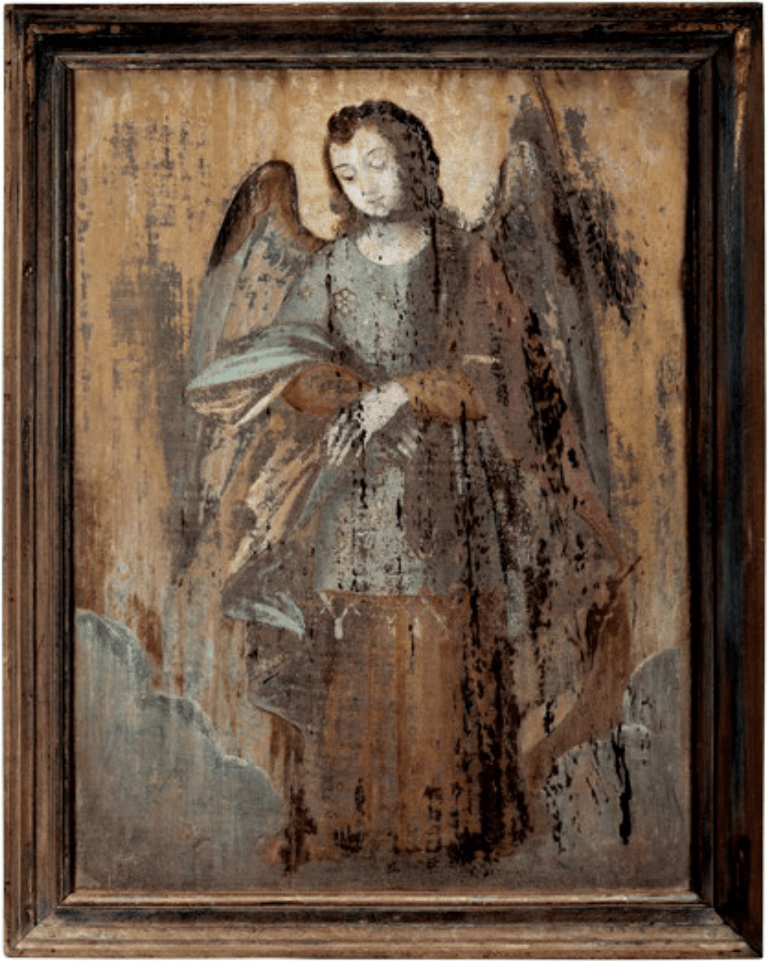



But before Mary and Joseph were married, the Archangel Gabriel came to her in Nazareth. He had been sent by God to tell her she was to have a child. Mary was frightened and troubled by this. How could she, not yet married, bear a child?
Gabriel said, “Do not be afraid, Mary; you have found favour with God. You will give birth to a son. He will be the Son of God.”
At this, Mary’s fear slowly dissolved into trembling joy. “I am the servant of the Lord,” she said.
The announcement by the Angel Gabriel to Mary or the Annunciation of Our Lady is celebrated on 25th March, the northern vernal (spring) equinox, a full nine months before Christmas. It is a popular subject in Marian art.





Joseph, too, was troubled when he found Mary was with child, and planned to call off the wedding quietly, as befitted a man of honour.
Then an angel came to him in a dream and said, “Joseph, Son of David, do not be afraid to take Mary home as your wife, because what is conceived in her is from the Holy Spirit. She will give birth to a son, and you are to name him Jesus, for he will save his people from their sins.”
In art, as here, St. Joseph is depicted often as a man of advanced years. He is the patron saint of workers, fathers, and of a happy death, for it was his fortune to pass away in the arms of Jesus and Mary.


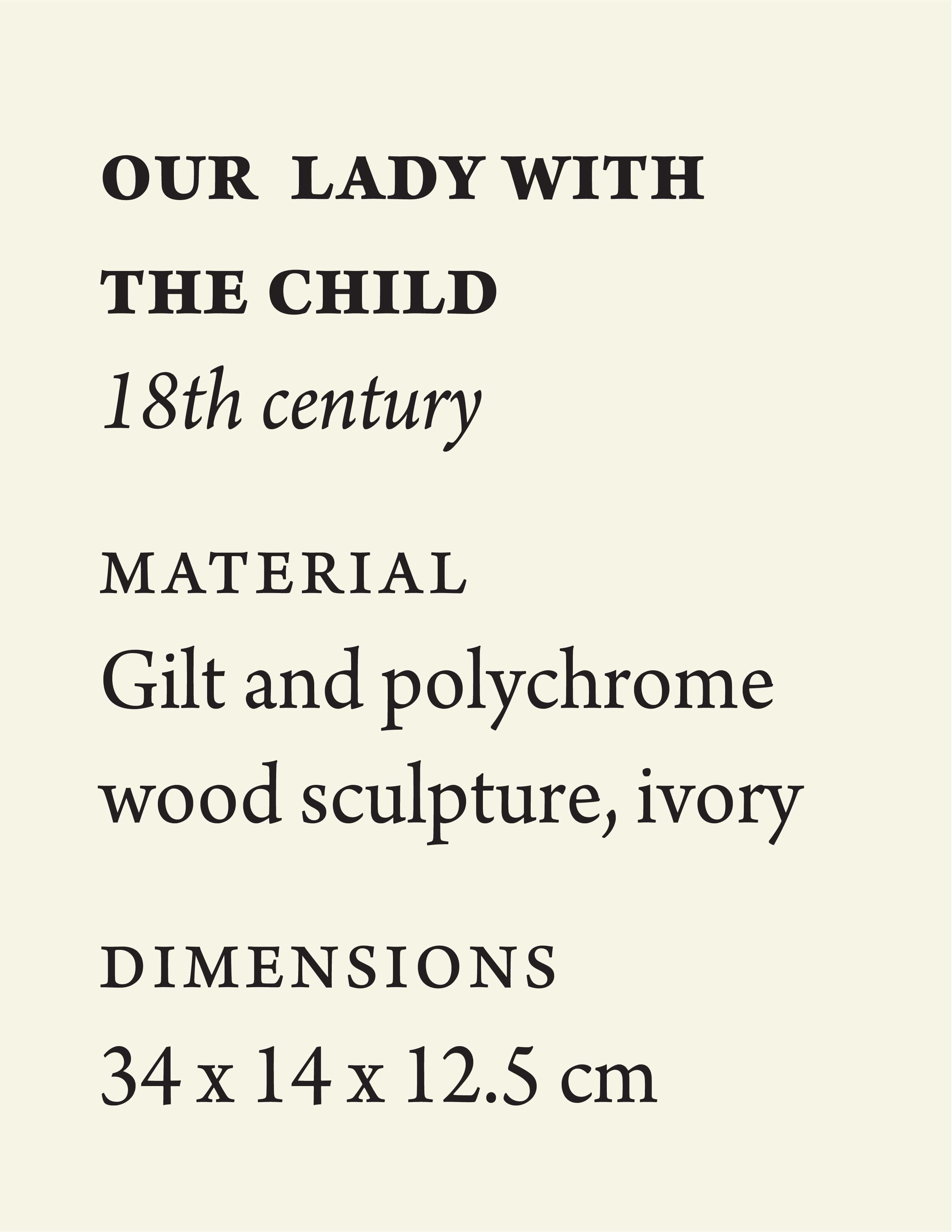


The Roman emperor Augustus (63 BCE-14 CE) had ordered a census. Mary, heavy with child, travelled with Joseph from Nazareth to his hometown, Bethlehem, to register. It was a hard journey, over 150 km long, and up into hill country. When they arrived at last, there was no place for them at the inn. Mary gave birth to Jesus, and put him in a manger, for no crib was to be had.
The Virgin Mary holds her child here, her manner triumphant but expression pensive. She is robed in the customary red-and-gold star-spangled flowing Baroque-style robes, and at her feet are angels supporting mother and child. The swirls below of blue (also her colour) bring to mind Botticelli’s Venus newly risen from the sea, as if to bestow the same radiant beauty on the young mother.

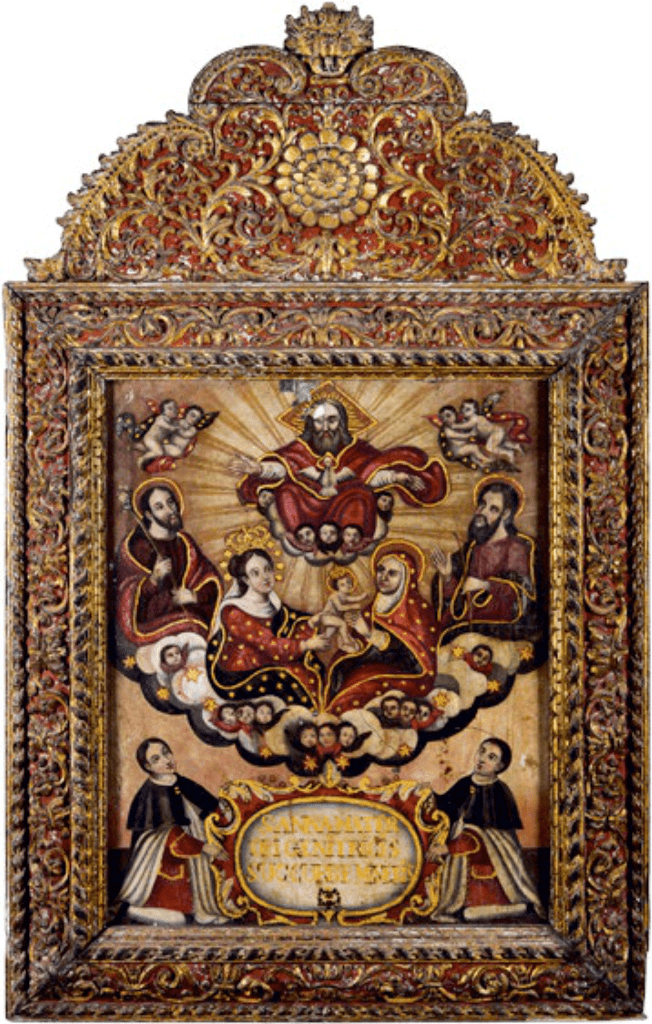



In a tender, human moment, a young, softly beautiful, nearly smiling Virgin Mary hands over her baby to his grandmother, St. Anne, for safekeeping. Looking on in this family portrait are the other members of the Holy Family, the Infant’s earthly father, St. Joseph, and maternal grandfather, St. Joachim, all blessed by the Holy Trinity. The expressions in this portrait, ranging from the trusting baby reaching for his grave-looking grandmother, an almost happy Virgin Mary, a thoughtful St. Joseph, a partly aware and accepting St. Joachim to, above all, an all-knowing, sorrowfully compassionate God the Father, reveal in their subtle drama a deeply emotional scene in the life of this unique human yet divine family.
Images of St. Anne with the Infant Jesus and the Virgin Mary, called Anna Selbdritt (‘Anna the third’, after Mary and Jesus) became very popular in late 15th century Germany, and then in Italy (Anna Metterza), with Leonardo da Vinci taking up this subject.

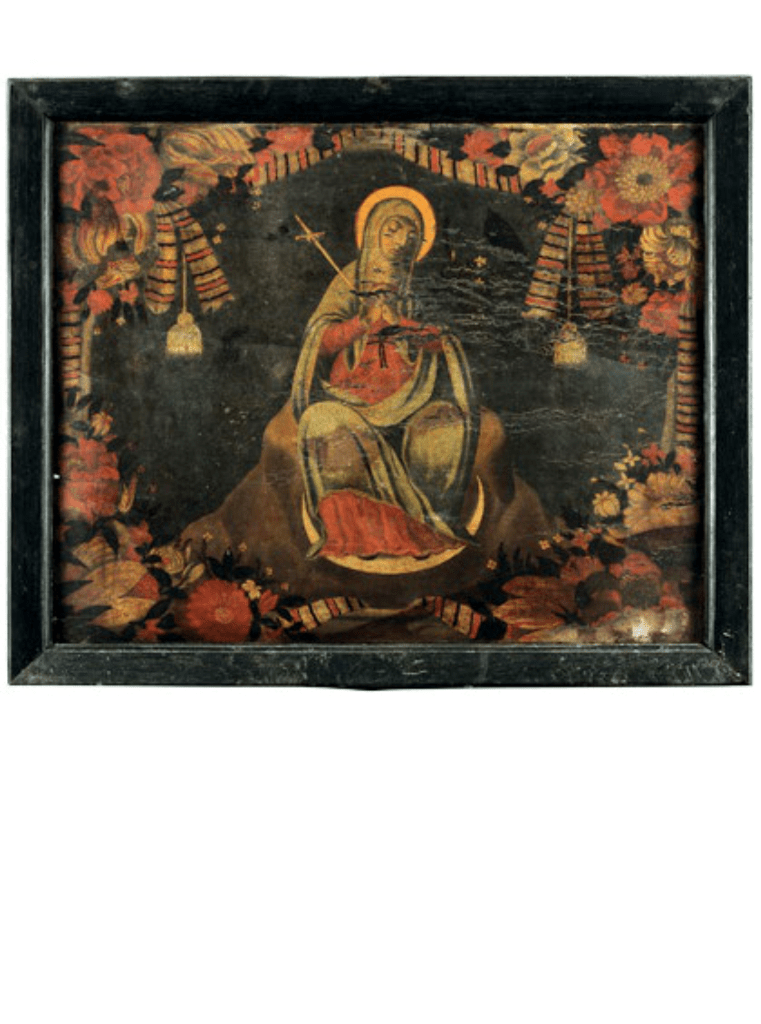
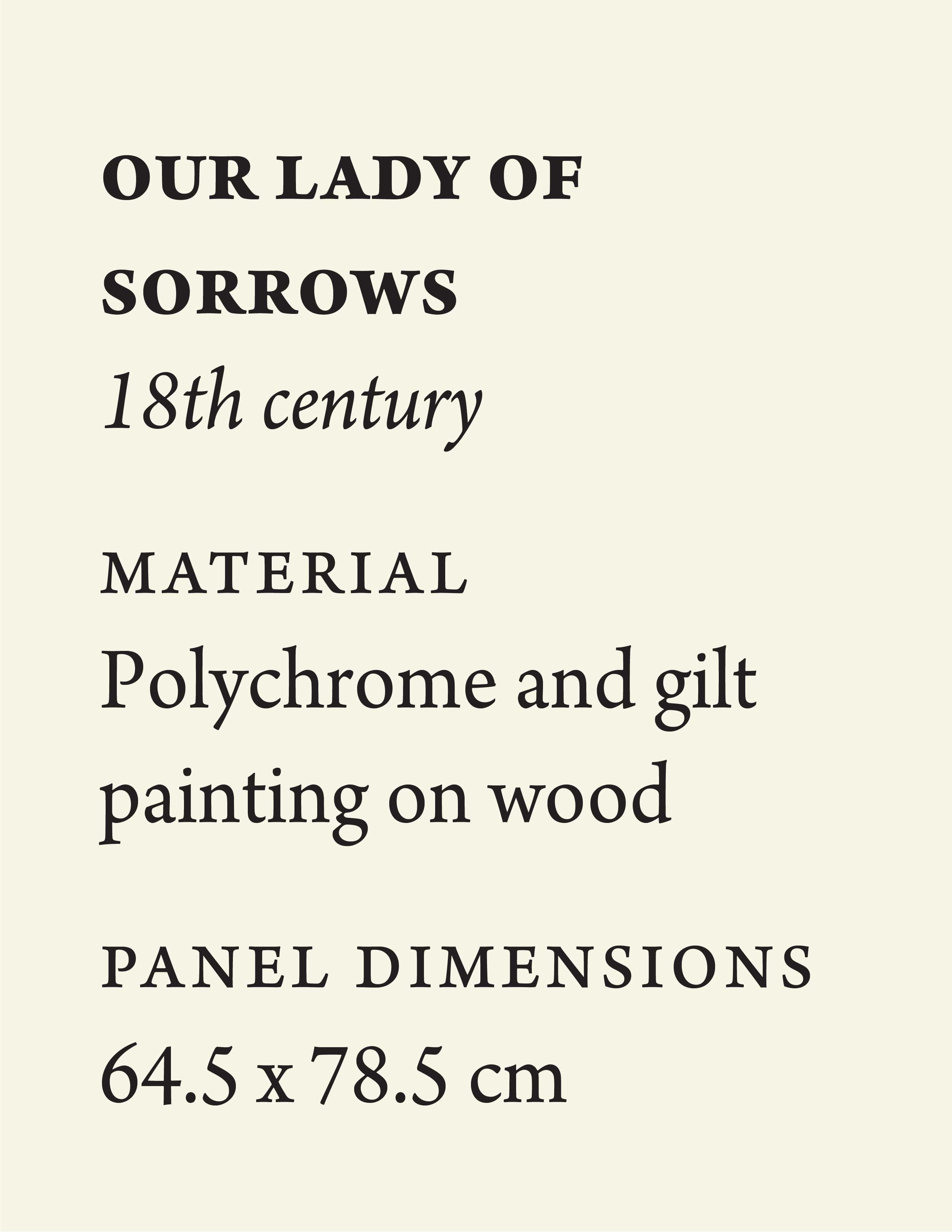


Forty days after the baby’s birth, as was customary, Mary and Joseph took Jesus for Presentation at the Jewish temple. There, an old man, Simeon, took the baby into his arms and said, “At last! Let your servant depart in peace, O Lord! For, according to your word, my eyes have seen your salvation.” As the amazed parents looked on, Simeon blessed the baby, and then turned to Mary. “Behold,” he said, “this child is set for the fall and rising of many in Israel, and to be a sign that is opposed, so that the thoughts of many are revealed. And a sword will pierce through your own soul, too...”
At this, Mary, happy only a moment ago at Simeon’s words, was chilled to the very soul. What could the old man mean by his enigmatic words? Was her tiny baby to suffer, and if so, how could she bear it? It was a sorrow and a fear that would hang over her life like a sword.
Our Lady of Sorrows or Mater Dolorosa (from Latin, ‘Mother of Sorrows’) is a key image in Marian art in the context of Simon’s prophecy. An anguished Virgin Mary is depicted, alone and bowed down with sorrow, sometimes with a sword piercing her breast, as here. It was a subject taken up by such famous painters as Titian and El Greco.


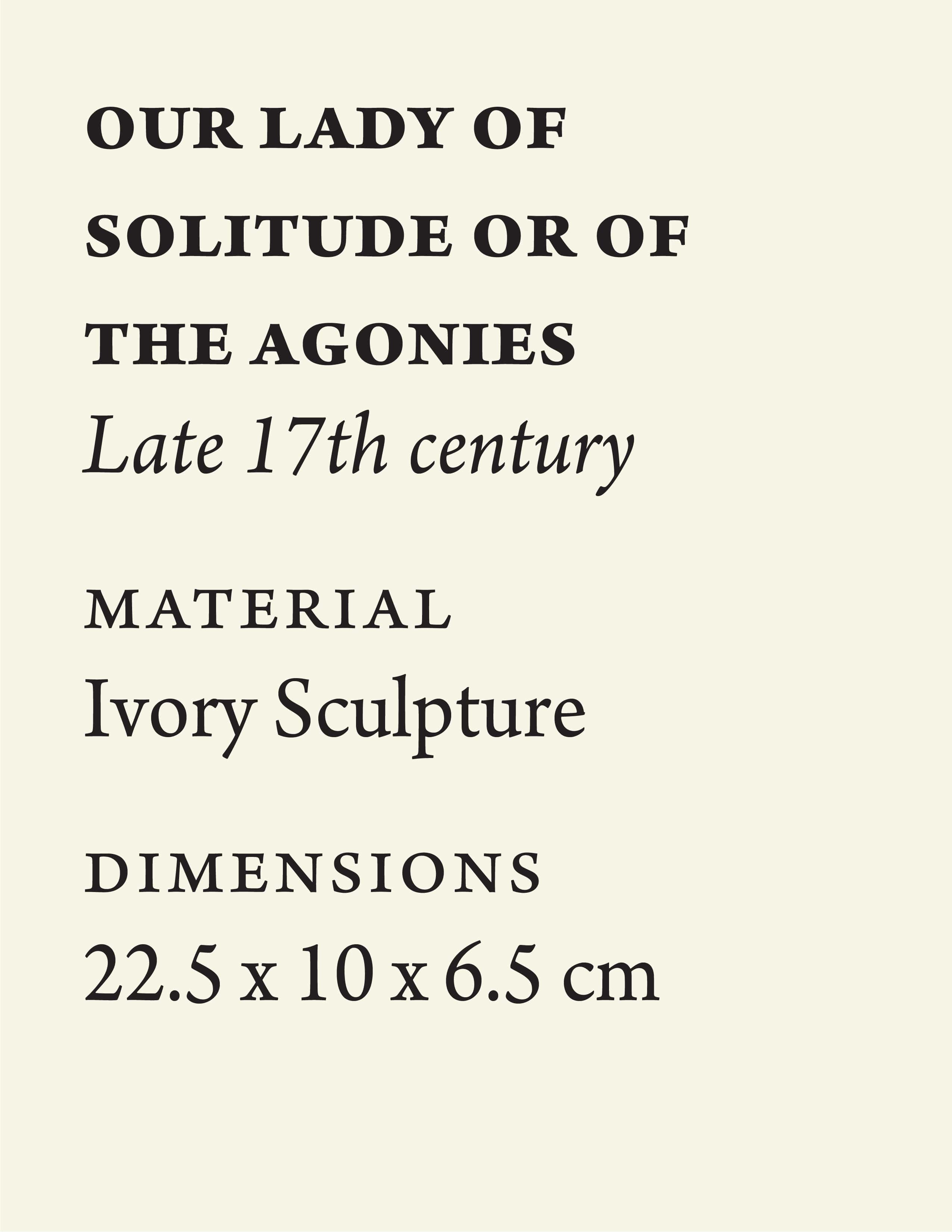


And then at last it came, that moment her whole life was poised to meet, when mother beheld her crucified son, nailed to a cross. Who can ever know what she felt, standing there, alone, and in her widow’s veil, what agonies she suffered?
And yet submit she did to the will of God, her hands clasped to her breast, lips resolute, eyes filled with sorrow, head subtly inclined towards the body of her son on the cross.
Our Lady of Solitude or Our Lady of the Agonies was a second important artistic representation of the Virgin Mary, known as the Stabat Mater (from Latin, ‘the mother was standing’). This type of image grew common in the second half of the 16th century, and shows the Virgin Mary as both actor and spectator; she is both the ideal mother and a mystic emblem of faith in the Crucified Saviour.

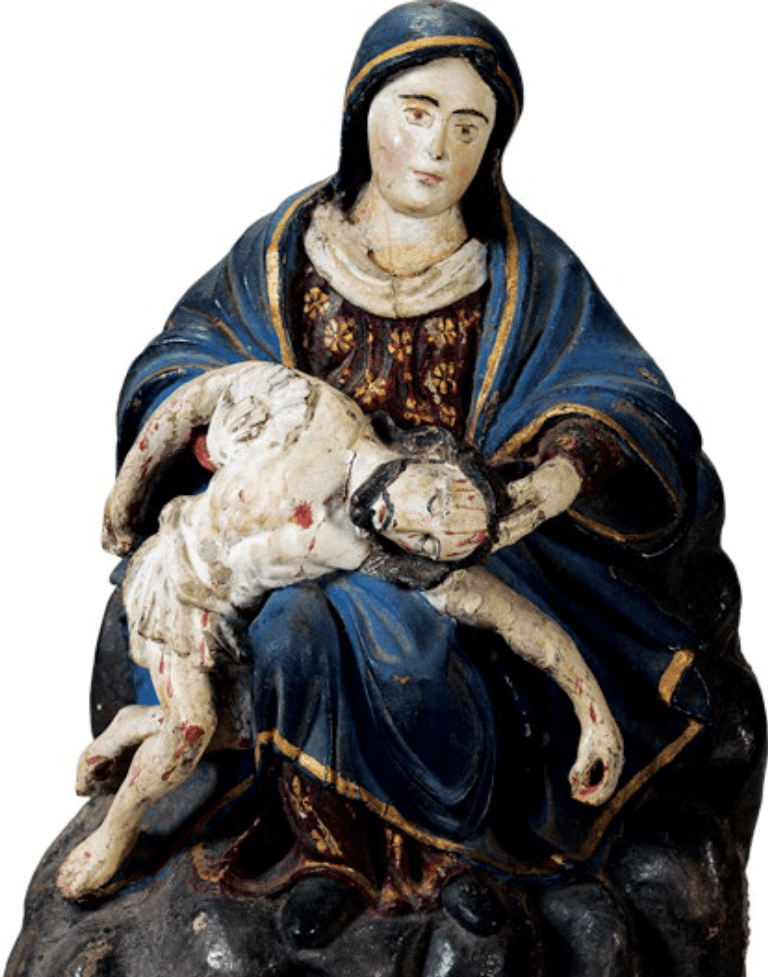



In his final moments on the cross, Jesus saw his mother standing close by, with John, a disciple he loved. ‘This is your mother now,’ said he to John as Mother Mary stood there, benumbed. Did she realize that, even at the very end, seeing her suddenly all alone, his concern was only for her well-being? At last Jesus died, having suffered greatly, and his body was brought down by Joseph of Arimathea after seeking the Roman governor Pontius Pilate’s permission.
The great emotional significance of Mary receiving her dead son and cradling him in her arms, much like she had held him as a baby, though not recorded in the gospels, formed the basis of a third important representation in Marian art. It was called the pietà (from Latin, ‘the pity’), and was commonly found in sculpture, as here. Originating in early 14th century Germany, the form came to Italy a hundred years later, where its most famous, most moving, representation, carved out of a single block of marble, was Michelangelo’s Pietà (1498-99), found in St. Peter’s Basilica in the Vatican.

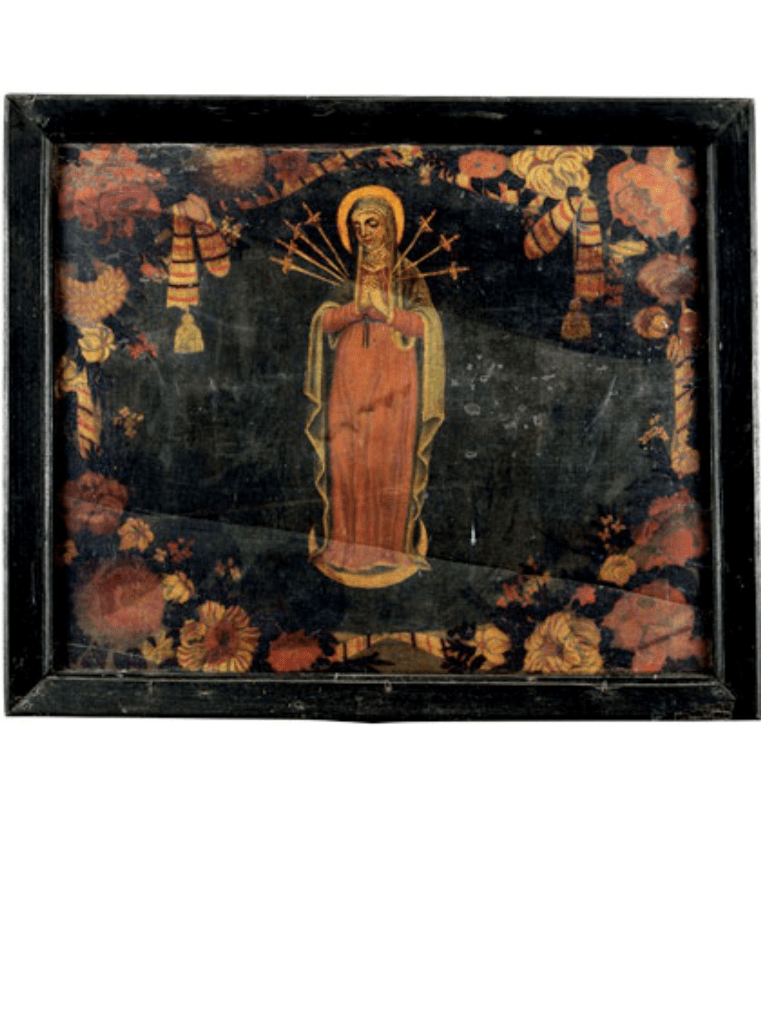



From the beginning, she knew he was different. Chilled to the soul at Simeon’s prophecy, this was the first of several sorrowful moments that would fill Mother Mary’s life. A second moment involved a flight to Egypt, when Joseph and Mary had to spirit away Jesus to save him from King Herod’s sword, a third, when her twelve-year-old son went missing, having stayed back at the Jewish temple. A fourth moment came upon her when she encountered him on the Via Dolorosa, dragging the cross to which he would be nailed, a fifth at his crucifixion, a sixth when a Roman soldier pierced Jesus’s body with his sword to make sure he was dead, and the final moment, when her dearly beloved son was laid in his tomb.
These seven moments of the Mater Dolorosa (‘Mother of Sorrows’) are represented in art by Our Lady of the Seven Sorrows, a variation of Our Lady of Sorrows. In this version, the Virgin Mary is shown with seven symbolic swords piercing her, arranged almost in a halo, as here.

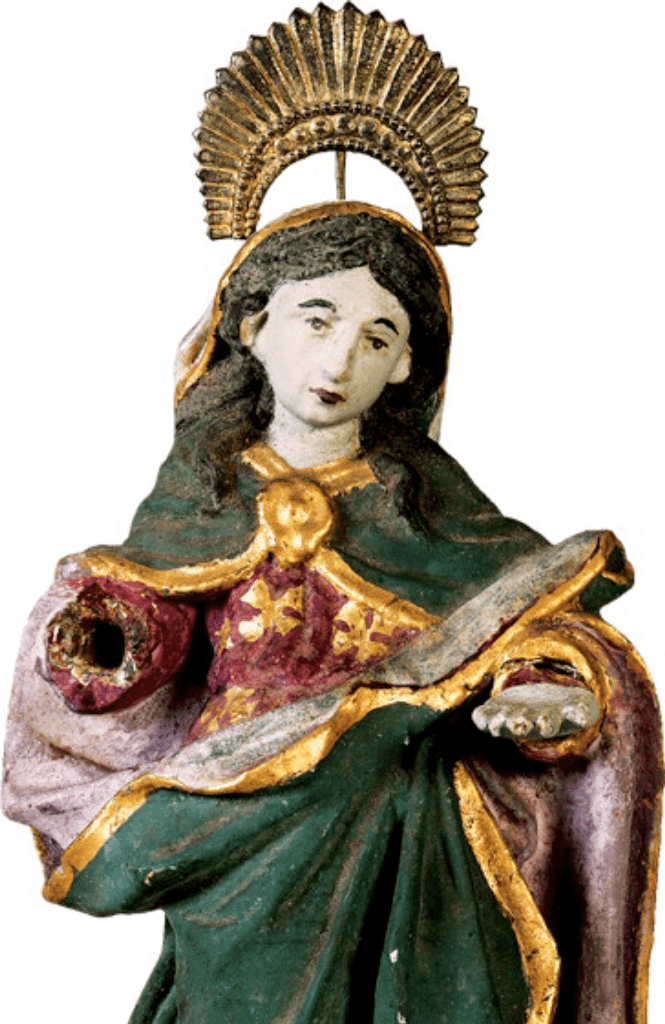
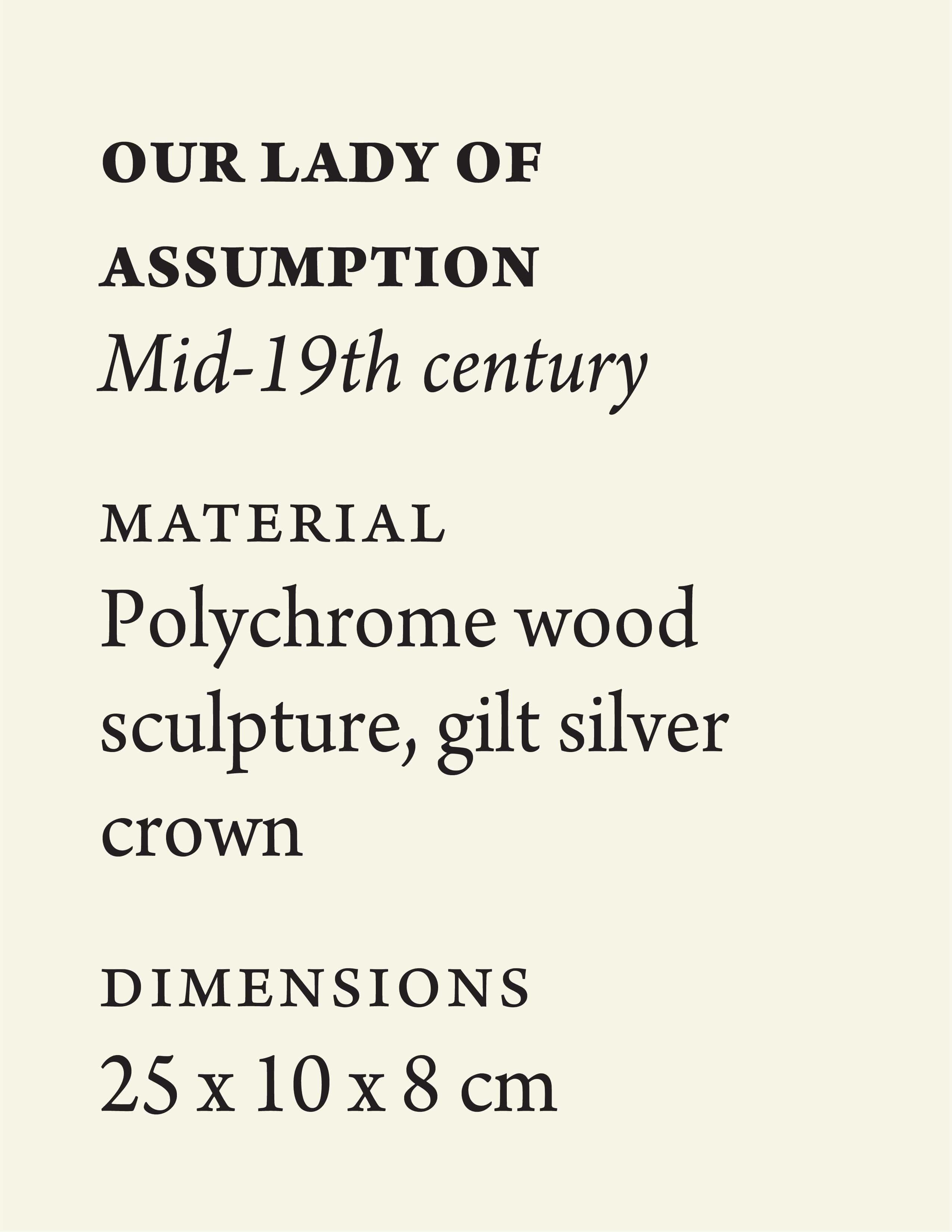


Little is known about the Virgin Mary’s life after the passing of her son. But in Jerusalem she must have lived, keeping his memory alive through his teachings. At last, having completed the course of her earthly life, Mary was assumed body and soul into heavenly glory, for was she not the Mother of God? A seventh century CE tradition speaks of how St. Thomas the Apostle, not being present at Mary’s death, asked for her tomb to be reopened, which was found to be empty but for her grave clothes.
The Virgin Mary being taken up to heaven is known as the Assumption (from Latin, ‘a taking’), celebrated by the Catholic Church on 15th August as the Holy Day of Obligation. In a late tradition, she is often shown in paintings on this subject as dropping her girdle down to St. Thomas from heaven as proof of the event. The Assumption was a favourite subject of the Gothic Sienese School (13th-15th centuries), and became popular in the 16th century in the rest of Italy, where it lent itself well to the Baroque style.

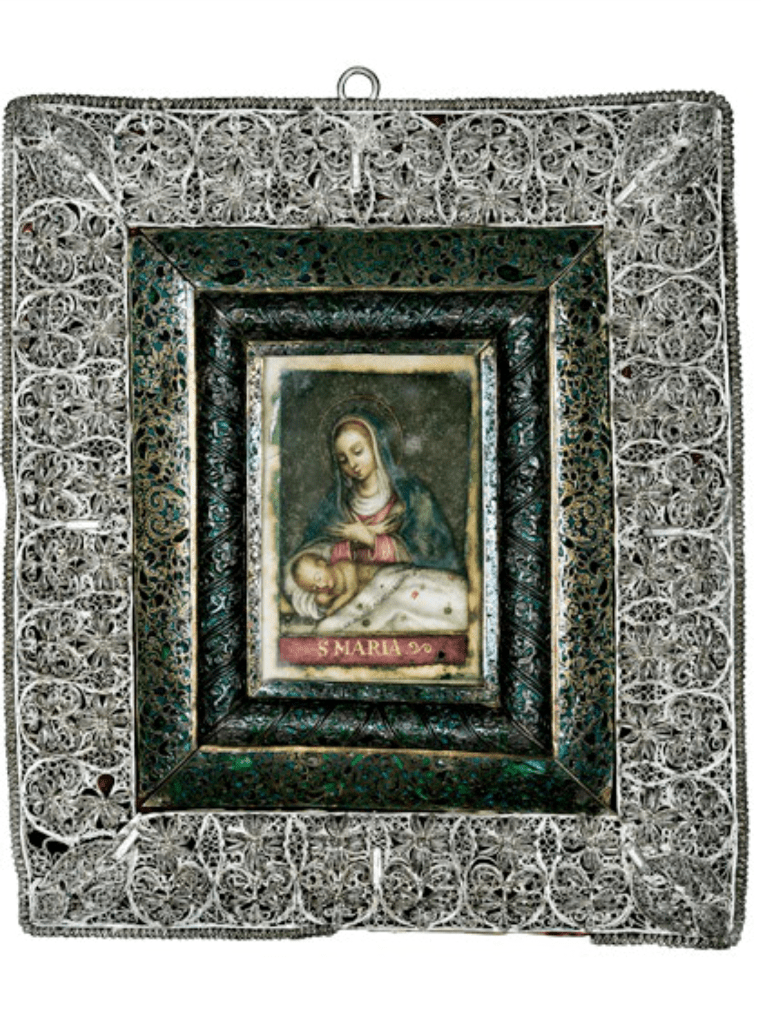
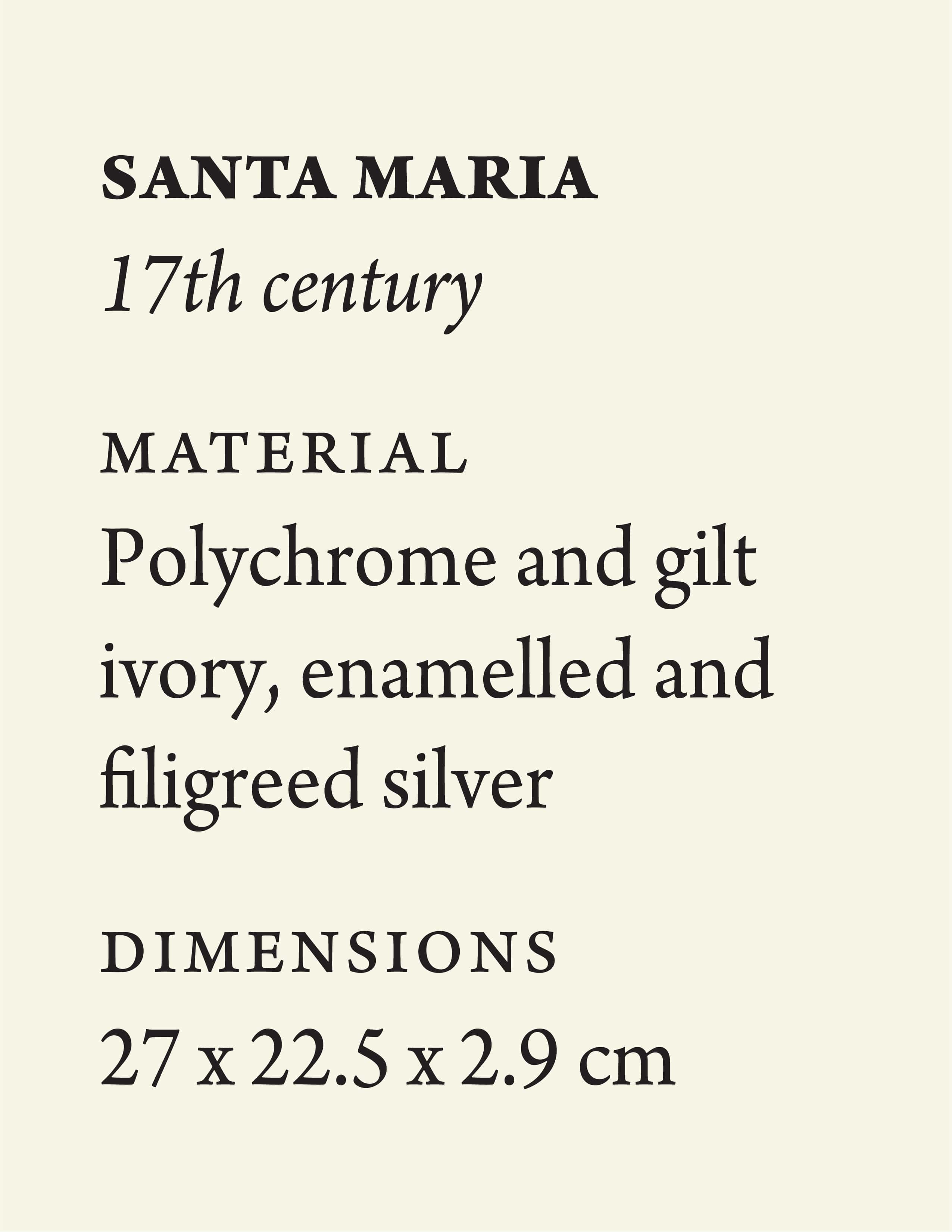


The Virgin Mary is considered the foremost of all saints, being closest to Christ as mother and disciple, and for her unique role in the plan of salvation. As Santa Maria, she is the consecrated model of Christian existence.
Santa Maria Maggiore, the largest Marian Church in Rome, was built in the mid-5th century CE, when Rome was already the centre of the Catholic world. This church has magnificent mosaics in its nave and triumphal arch, considered milestones in Marian art in their depiction of scenes from the life of the Virgin Mary, and that of her son’s.


